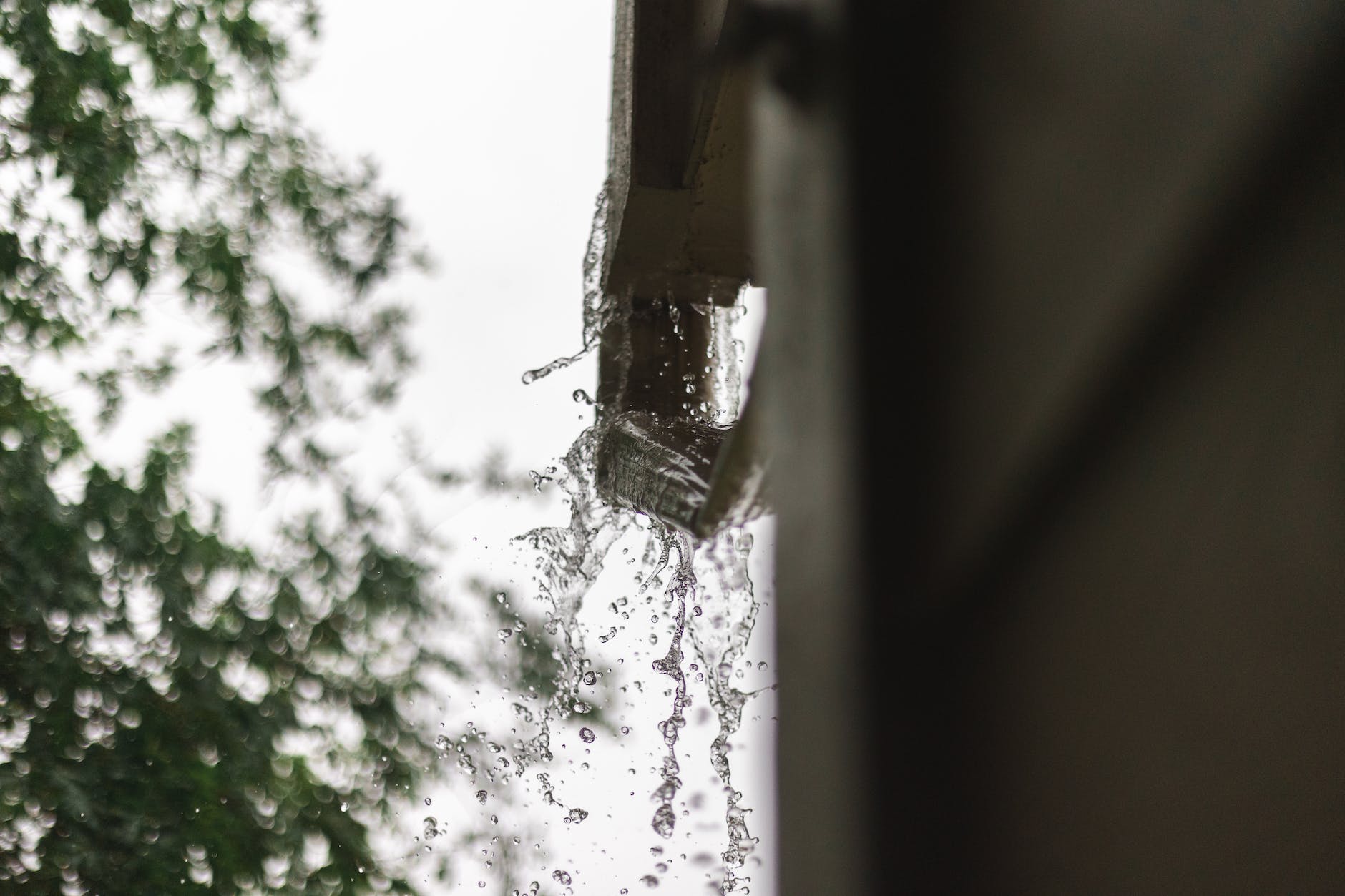The size of the gutter screws can vary depending on the specific type and model you choose for your gutter installation. Generally, gutter screws come in different lengths and diameters to accommodate various gutter materials and thicknesses. Common sizes range from 1/2 inch to 1 inch in length, with diameters typically around #8 or #10.
It is crucial to select the appropriate size that matches the thickness of your gutter material to ensure a secure and lasting installation. Refer to the manufacturer’s guidelines or consult with a professional to determine the exact size needed for your specific gutter system. Always consider factors like climate, material compatibility, and the potential for expansion and contraction when selecting the right size for your gutter screws.
Gutter Screws
Gutter screws play a crucial role in securing and maintaining the integrity of a gutter system. These specialized screws are designed to fasten gutters securely to the fascia board, providing stability and preventing sagging or detachment over time. Typically made from corrosion-resistant materials like stainless steel or coated aluminium, gutter screws are durable and capable of withstanding harsh weather conditions.
The selection of the appropriate screw size is essential for proper installation, ensuring a tight fit and optimal performance. Homeowners and contractors alike rely on these screws to enhance the longevity and functionality of gutters, protecting homes from water damage and contributing to efficient rainwater drainage. Regular inspection and maintenance of gutter screws are advisable to address any loosening or wear, safeguarding the overall effectiveness of the gutter system.
Gutter Installation Screws
Gutter installation screws are integral components in the process of securely affixing gutters to a building’s fascia or roofline. These specialized screws are designed to withstand the harsh elements and provide a stable, long-lasting attachment for gutter systems. Typically made from corrosion-resistant materials such as stainless steel or coated aluminium, these screws offer durability against exposure to rain, snow, and varying temperatures. The installation process involves strategically placing the screws along the length of the gutter, ensuring proper spacing and alignment to accommodate the specific design and dimensions of the gutter system.
Gutter installation screws may feature unique characteristics like self-drilling capabilities or neoprene washers to enhance their functionality. The self-drilling capability allows for efficient penetration into the fascia board without the need for pre-drilling, streamlining the installation process. Neoprene washers provide a watertight seal, preventing water from infiltrating the fascia or the structure behind it. Proper installation of gutter screws is crucial for preventing issues such as sagging gutters, which can lead to water damage to the building’s foundation or exterior.
Additionally, the secure attachment of gutter installation screws contributes to the overall stability of the gutter system, ensuring effective rainwater drainage and minimizing the risk of leaks or structural damage over time. Professional installation and adherence to manufacturer guidelines are essential to maximize the performance and longevity of gutter installation screws, ultimately safeguarding homes and buildings from water-related issues. Regular maintenance and inspection of these screws can also help identify and address any potential concerns, ensuring the continued effectiveness of the gutter system in protecting the structure from water damage.
Gutter Screw Specifications
Gutter screw specifications are crucial considerations when selecting and installing screws for gutter systems. These screws, typically made from durable materials such as stainless steel or coated aluminium, are specifically designed to secure gutters to the fascia board and maintain the overall stability of the gutter system. The specifications of these screws encompass various factors, including size, length, and threading.
The size of the screw is determined by its diameter. It can vary based on the specific requirements of the gutter material and the application. Length is another critical specification, as it determines how deeply the screw penetrates the fascia board, ensuring a secure attachment. The threading on gutter screws may be self-tapping, allowing for easier installation without the need for pre-drilling.
Additionally, corrosion resistance is a key feature, as gutters are constantly exposed to the elements, and screws must withstand the corrosive effects of rain, snow, and other environmental factors. Gutter screw specifications also consider the type of head, with hex heads or Phillips heads being common choices for easy installation.
Furthermore, some gutter screws come with built-in features like neoprene washers or rubber gaskets, enhancing their water-resistant properties and preventing leaks. Following manufacturer guidelines and local building codes ensures that the selected gutter screws meet the specific needs of the gutter system, providing longevity and effective performance in safeguarding homes against water damage. Regular inspection and maintenance of gutter screws are advisable to address any wear or loosening, preserving the integrity of the gutter system over time.
Applications for Gutter Screws
Gutter screws find a variety of applications in the installation, maintenance, and enhancement of gutter systems, playing a crucial role in preserving the structural integrity and functionality of residential and commercial buildings. Primarily, these specialized screws are employed during the initial installation of gutters, securing them to the fascia board or other support structures along the roofline. Gutter screws help create a robust and stable connection, ensuring that the gutters can withstand the weight of rainwater, snow, and debris without sagging or detaching. Additionally, gutter screws are utilized in the installation of gutter accessories, such as downspouts, elbows, and hangers, contributing to a comprehensive and efficient drainage system.
Beyond installation, gutter screws serve a vital role in maintenance activities. Regular inspection and tightening of these screws are necessary to address any loosening over time, preventing potential issues like leaks or gutter misalignment. In regions prone to severe weather conditions, where gutters are exposed to strong winds and heavy rainfall, the use of durable and corrosion-resistant materials in gutter screws becomes essential to withstand environmental stressors effectively.
Moreover, gutter screws are integral in retrofitting or upgrading gutter systems. Homeowners and contractors may choose to replace or enhance existing gutter systems with more advanced designs or materials, and gutter screws facilitate this process by securely anchoring the new components in place. Their versatility allows them to adapt to various gutter materials, such as aluminium, steel, or vinyl.
In essence, gutter screws are indispensable elements in the lifecycle of a gutter system. From the initial installation to ongoing maintenance and potential upgrades, these screws contribute significantly to the overall performance, longevity, and resilience of gutter systems in protecting structures from water damage and ensuring efficient rainwater management.
How to Install Your Gutter Screws
Installing gutter screws is a straightforward process that requires careful attention to detail to ensure a secure and long-lasting attachment. Here’s a general guide on how to install gutter screws:
Materials and Tools:
- Gutter screws
- Gutter system components (gutters, downspouts, etc.)
- Screwdriver or drill
- Ladder
- Measuring tape
- Level
- Pencil
Installation Steps:
Plan and Measure
Before you start, plan the placement of your gutters and measure the required length accurately. Mark the positions for your gutter screws, ensuring that they are evenly spaced and aligned with the slope for proper drainage.
Attach Hangers:
If you’re using gutter hangers, attach them to the fascia board at the marked positions. Hangers provide additional support and help distribute the weight of the gutters evenly.
Prepare Your Gutter Screws:
Ensure you have the appropriate gutter screws for your gutter material and the application. Consider using corrosion-resistant screws, especially if your region experiences diverse weather conditions.
Secure Gutters in Place:
With the help of a ladder, position the gutter along the hangers or directly against the fascia board. Starting at one end, secure the gutter in place by driving the screws through the gutter’s mounting holes and into the fascia board. Use a level to ensure that the gutter is sloping correctly toward the downspout.
Space Screws Evenly:
Space the screws evenly along the length of the gutter. The recommended spacing can vary based on the type of gutter system and local building codes, so refer to manufacturer guidelines for specific recommendations.
Continue Installation:
Continue securing the gutter in place with screws, moving along its length. If you have gutter sections that connect, use connectors and additional screws to ensure a secure joint.
Attach Downspouts and End Caps
Once the gutters are securely in place, attach downspouts and end caps as needed. Secure these components with screws to ensure they stay firmly attached.
Check Alignment and Slope
Periodically check the alignment of the gutter system using a level and ensure that it maintains the proper slope toward the downspouts for efficient water drainage.
Tighten and Inspect
After installation, go back and tighten all the screws. Periodically inspect the gutter system for any signs of sagging, misalignment, or loose screws, and address any issues promptly.
By following these steps and paying attention to proper spacing and alignment, you can install gutter screws effectively, contributing to the stability and functionality of your gutter system. Always refer to manufacturer guidelines for specific instructions related to your gutter and screw type.
Determining the Right Gutter Screw Size
Choosing the correct gutter screw size is crucial to ensure the stability and longevity of your gutter system. Here’s a guide to help you determine the right gutter screw size:
Identify Gutter Material:
Different gutter materials may require different screw sizes. Common materials include aluminium, steel, and vinyl. Consult the manufacturer’s guidelines or specifications for the recommended screw sizes based on the material of your gutters.
Consider Gutter Thickness
The thickness of your gutter material is a key factor in selecting the appropriate screw size. Thicker gutters may require longer and sturdier screws to provide a secure attachment. Measure the thickness of your gutter material to guide your choice.
Evaluate Local Weather Conditions
Suppose you live in an area with extreme weather conditions, such as heavy rainfall, high winds, or snow loads. In that case, it’s advisable to choose screws that can withstand these environmental stressors. Corrosion-resistant materials like stainless steel or coated screws are suitable for regions with diverse weather patterns.
Determine Spacing Requirements
Refer to the manufacturer’s recommendations for the spacing of screws along the length of the gutter. Proper spacing is essential for distributing the weight of the gutter and ensuring a secure attachment to the fascia board.
Choose Screw Type
Depending on your preference and the design of your gutter system, you can choose from various screw types, including self-tapping screws or screws with washers. Self-tapping screws are convenient for materials like aluminium and are designed to create their threads during installation.
Consider Gutter Accessories
If you plan to attach additional accessories such as gutter guards, downspouts, or hangers, take these into account when selecting the screw size. The screws used for accessories should be compatible with the accessory material and the gutter itself.
Refer to Building Codes
Check local building codes and regulations, as they may stipulate specific requirements for gutter installations, including the type and size of screws. Compliance with building codes is essential for the safety and longevity of your gutter system.
Consult with Professionals
If you are unsure about the appropriate screw size for your gutter system, consider consulting with a roofing or gutter professional. They can provide expert advice based on the specific characteristics of your roof and climate.
By considering these factors and following manufacturer recommendations, you can determine the right gutter screw size for your specific application. This ensures a secure and reliable attachment, contributing to the overall effectiveness of your gutter system in managing rainwater and protecting your home from potential water damage.
Choosing Gutter Screws: Factors Influencing Size and Installation
Selecting the right gutter screws is a crucial step in ensuring the stability and effectiveness of your gutter system. Several factors come into play when choosing gutter screws, influencing both their size and installation. Here are key considerations:
- Gutter Material: Different gutter materials require different screw types and sizes. For example, aluminium gutters may work well with self-tapping screws. In contrast, steel gutters may benefit from corrosion-resistant stainless steel screws. Ensure compatibility between the gutter material and the screws to prevent corrosion and ensure a secure fit.
- Gutter Thickness: The thickness of the gutter material is a critical factor. Thicker gutters may necessitate longer screws to penetrate and secure the gutter to the fascia board effectively. Measure the thickness of your gutter to guide you in selecting the appropriate screw length.
- Environmental Conditions: Consider the local climate and environmental conditions. If your area experiences heavy rainfall, high winds, or extreme temperature variations, opt for screws made from materials resistant to corrosion, such as stainless steel or coated screws. This choice ensures the longevity of the gutter system under diverse weather patterns.
- Screw Type: Choose a screw type based on your preferences and the materials involved. Self-tapping screws are convenient for some materials, creating their threads during installation. Screws with integrated washers can provide additional stability and help create a watertight seal.
- Spacing and Distribution: Follow the manufacturer’s recommendations for the spacing and distribution of screws along the length of the gutter. Proper spacing helps evenly distribute the weight of the gutter and ensures a secure attachment. Adhering to these guidelines is crucial for the overall stability of the gutter system.
- Gutter Accessories: If you plan to install gutter accessories such as hangers, downspouts, or guards, consider the type and size of screws compatible with these components. The screws used for accessories should complement the overall gutter system and ensure a cohesive installation.
- Building Codes and Regulations: Check local building codes and regulations as they may stipulate specific requirements for gutter installations, including the type and size of screws. Compliance with these codes is essential to ensure the safety and durability of the gutter system.
- Ease of Installation: Consider the ease of installation, especially if you are undertaking a DIY project. Self-tapping screws can simplify installation, while screws with pre-applied coatings or lubricants may enhance ease of driving.
- Professional Advice: If you are unsure about the appropriate screws for your gutter system, consider seeking advice from roofing or gutter professionals. They can offer insights based on their experience and expertise, guiding you towards the most suitable options for your specific application.
By carefully considering these factors, you can choose gutter screws that are well-suited to your gutter system, ensuring a secure and reliable installation that withstands the elements and contributes to the long-term functionality of your gutters.





